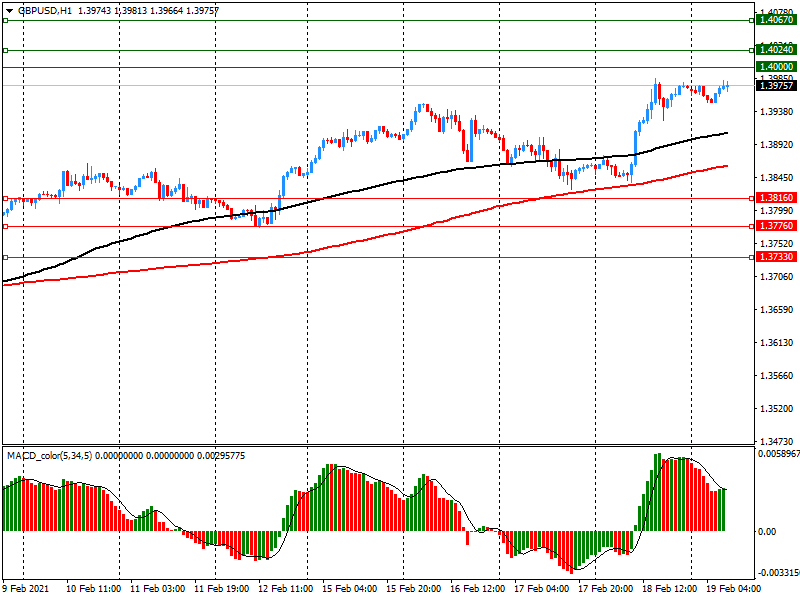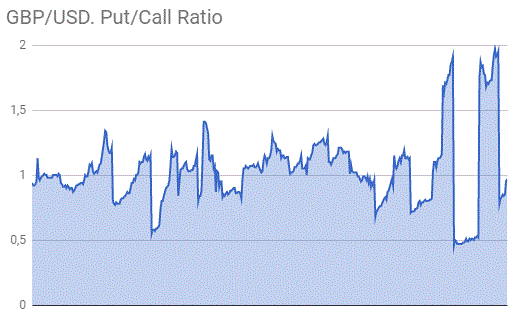- Analytics
- News and Tools
- Market News
CFD Markets News and Forecasts — 19-02-2021
On Monday, at 09:00 GMT, Germany will present the IFO Business Environment indicator, the IFO assessment of the current situation indicator, and the IFO economic expectations indicator for February. At 11: 00 GMT, in Germany, the Bundesbank's monthly report will be released. At 14:00 GMT, Belgium will present the business sentiment index for February. At 15:00 GMT, the US will publish the index of leading indicators for January. At 21:45 GMT, New Zealand will report the change in retail trade for the 4th quarter.
On Tuesday, at 00:30 GMT, Australia will announce the change in the trade balance for January. At 07:00 GMT, Britain will report changes in the number of applications for unemployment benefits for January, as well as the unemployment rate and average earnings for December. At 07:30 GMT, Switzerland will release the producer and import price index for January. At 10:00 GMT, the euro zone will publish the consumer price index for January. At 11:00 GMT, in the UK, CBI retail sales volume balance for February will be released. At 14:00 GMT, the US will announce the change in the S&P/Case-Shiller housing price index for December. At 15:00 GMT, the US will present the consumer confidence indicator and the Fed-Richmond manufacturing index for February. Also at 15:00 GMT, Fed Chairman Powell will make a speech. At 17:30 GMT, in Canada, the head of the Bank of Canada Macklem will make a speech.
On Wednesday, at 00:30 GMT, Australia will report the change in the construction work done for the 4th quarter and will release the labor cost index for the 4th quarter. At 01:00 GMT in New Zealand, the RBNZ interest rate decision will be announced, and at 02:00 GMT, the RBNZ press conference will be held. At 07:00 GMT, Germany will announce the change in GDP for the 4th quarter. At 09:00 GMT, Switzerland will release the index of expectations of Swiss investors, according to ZEW and Credit Suisse for February. At 15:00 GMT, the US will report the change in new home sales for January. Also at 15:00 GMT, Fed Chairman Powell will make a speech. At 15:30 GMT, the United States will announce changes in oil reserves according to the Department of Energy.
On Thursday, at 00:00 GMT, New Zealand will release the ANZ Business Confidence indicator for February. At 00:30 GMT, Australia will announce a change in the volume of capital expenditures in the private sector for the 4th quarter. At 07:00 GMT, Germany will present the GFK consumer Climate index for March. At 09:00 GMT, the euro zone will report on the change in the M3 aggregate of money supply and private sector lending for January. At 10:00 GMT, the euro zone will present the index of business optimism in industry, the index of sentiment in the economy and the index of consumer confidence for February. At 13:30 GMT, the US will announce changes in GDP for the 4th quarter, the volume of orders for long-term goods for January and the number of initial applications for unemployment benefits. At 15:00 GMT, the US will announce a change in the volume of pending home sales for January. At 21:45 GMT, New Zealand will report a change in the foreign trade balance for January. At 23:30 GMT, Japan will present the Tokyo consumer price index for February, and at 23:50 GMT, it will announce changes in industrial production and retail trade volume for January.
On Friday, at 00:30 GMT, Australia will report a change in private sector lending for January. At 05:00 GMT, Japan will announce a change in the housing starts for January. At 06:45 GMT, Switzerland will announce a change in the volume of GDP for the 4th quarter. At 07:00 GMT, Britain will release the Nationwide house price index for February. At 07:30 GMT, Switzerland will report the change in real retail trade volume for January. At 07:45 GMT, France will announce changes in consumer spending for January and GDP for the 4th quarter. At 08:00 GMT, Switzerland will present the KOF index of leading economic indicators for February. At 13:30 GMT, Canada will release the producer price index for January. Also at 13: 30 GMT, the US will publish the main index of personal consumption expenditures for January, and will announce changes in personal income and expenses for January. At 14:45 GMT, the US will present the Chicago Purchasing Managers ' Index for February, and at 15:00 GMT, the University of Michigan Consumer sentiment index for February. At 18:00 GMT, in the United States, the Baker Hughes report on the number of active oil drilling rigs will be released.
On Sunday at 01:00 GMT, China will publish the PMI index for the manufacturing sector and the index of activity in the non-manufacturing sector for February. At 21:30 GMT, Australia will release the AiG manufacturing activity index for February.
© 2000-2025. All rights reserved.
This site is managed by Teletrade D.J. LLC 2351 LLC 2022 (Euro House, Richmond Hill Road, Kingstown, VC0100, St. Vincent and the Grenadines).
The information on this website is for informational purposes only and does not constitute any investment advice.
The company does not serve or provide services to customers who are residents of the US, Canada, Iran, The Democratic People's Republic of Korea, Yemen and FATF blacklisted countries.
Making transactions on financial markets with marginal financial instruments opens up wide possibilities and allows investors who are willing to take risks to earn high profits, carrying a potentially high risk of losses at the same time. Therefore you should responsibly approach the issue of choosing the appropriate investment strategy, taking the available resources into account, before starting trading.
Use of the information: full or partial use of materials from this website must always be referenced to TeleTrade as the source of information. Use of the materials on the Internet must be accompanied by a hyperlink to teletrade.org. Automatic import of materials and information from this website is prohibited.
Please contact our PR department if you have any questions or need assistance at pr@teletrade.global.




















